Fresh moose sign & sighting raises excitement
Sue Fea © the Southland App
30 March 2025, 4:28 AM
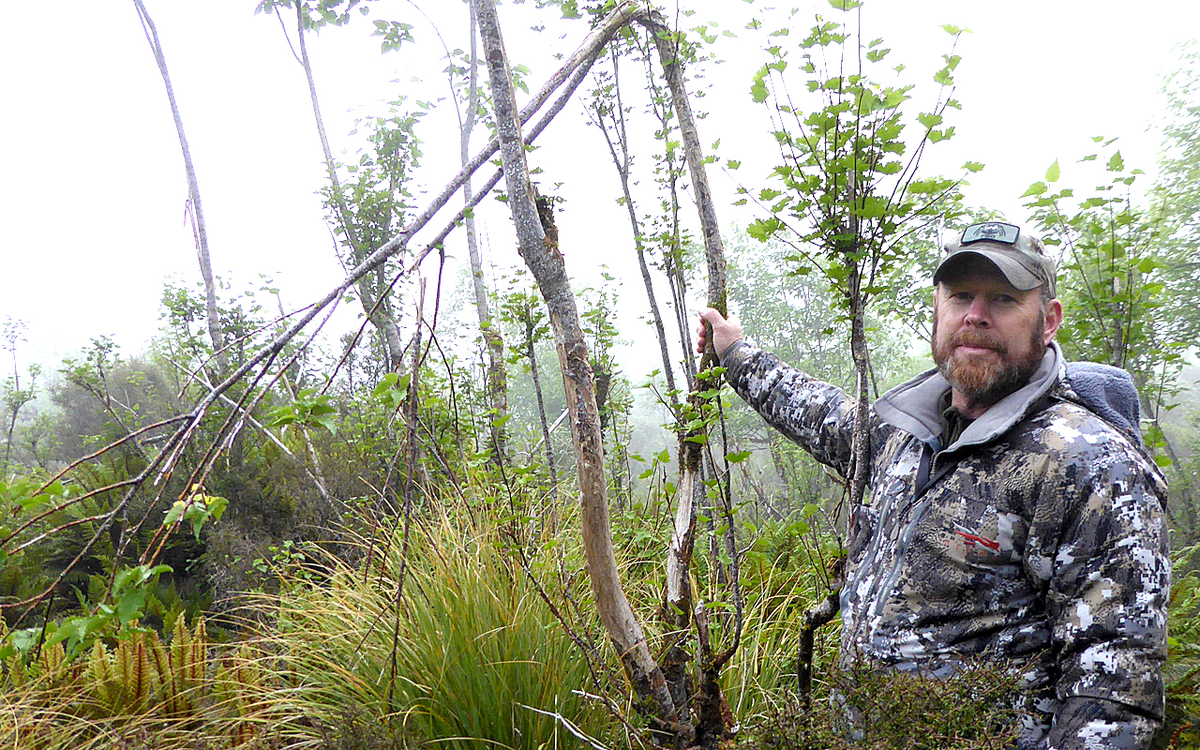 Kiwi-born Aussie Matt Ellis, an experienced moose and grizzly bear hunter, said he, along with Ken Tustin and Sir Richard Hayes, came across moose sign just two weeks ago in the Fiordland National Park. This follows a moose sighting around the same time by North American veterinarian Norbert Nigon. Photo: Supplied
Kiwi-born Aussie Matt Ellis, an experienced moose and grizzly bear hunter, said he, along with Ken Tustin and Sir Richard Hayes, came across moose sign just two weeks ago in the Fiordland National Park. This follows a moose sighting around the same time by North American veterinarian Norbert Nigon. Photo: SuppliedThere's renewed excitement that moose still exist in the Fiordland National Park, with two independent reports this month offering the most credible evidence since the last recorded sighting in 2020.
Norbert Nigon, of Minnesota, USA – A vet for almost 40 years and very familiar with wild moose – says he spotted the distinctive moose features looking at him across a river on the Kepler Track on 13 March when he stepped off the track to get a better river view.
Specialising in large animal medicine like cattle, horses, bison and white tail deer, Nigon’s credentials are strong. He says he’s observed cow moose and calves in the wild during holidays to Jackson Hole, Wyoming, and Glacier National Park.
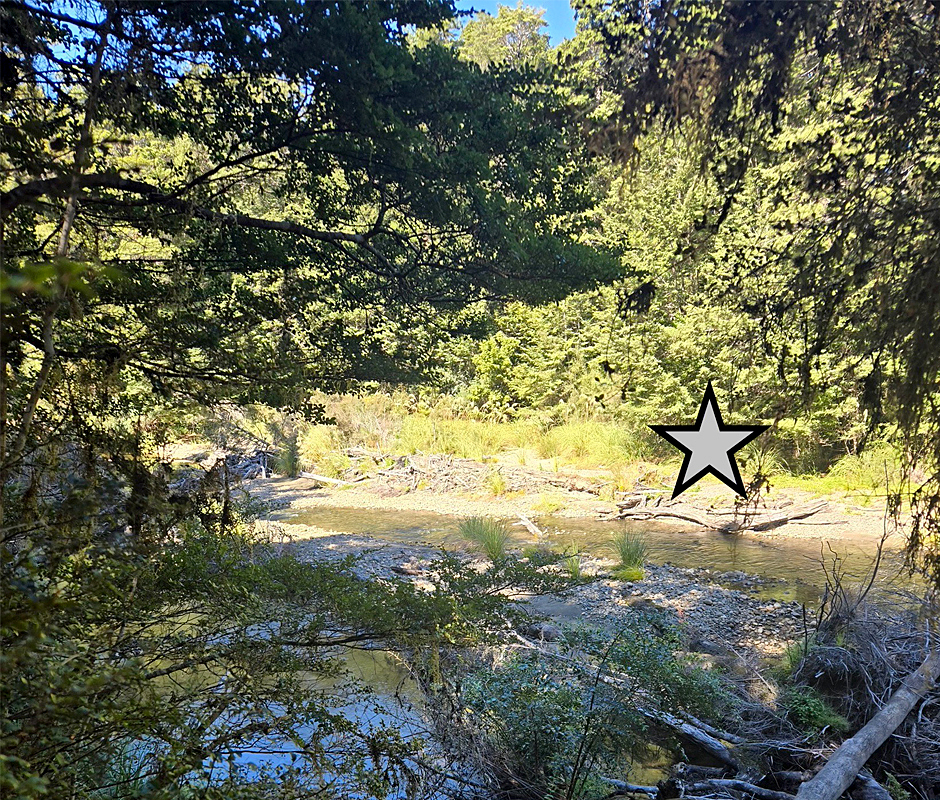
The site (identified by a superimposed star) near the Forest Burn, just 30-40 minutes walk south of the Rainbow Reach swing bridge and next to the Kepler Track, where a cow moose was seen on 13th March by Minnesota veterinarian Norbert Nigon.
Now Kiwi-born Aussie Matt Ellis, who has hunted moose in North America and enthusiastically supports Fiordland 'Moose Man’ researcher Ken Tustin, says just two weeks ago he too found more signs that moose had been in the park.
Ellis, who works in the defence industry, says he found moose teeth and mouth marks high in the bark of a tree, well above where a deer could reach. He estimated the marks had been made about six months prior.
An experienced hunter and part-time Te Anau resident who’s hunted moose and grizzly bears in Alaska, Ellis says he also found what he believes were moose droppings a year ago in the park. Unfortunately, DNA testing was inconclusive due to heavy rainfall.
“We’ve got photographic evidence of bite marks on trees from last year,” Ellis says.
“I’ve seen what’s likely to be moose signs on the bark of trees. It’s totally different to the damage that a red deer would cause. These have been bite driven, not antler driven, as they’d be with deer."
"There’s no question these were from moose. We have a lot of photographs.”
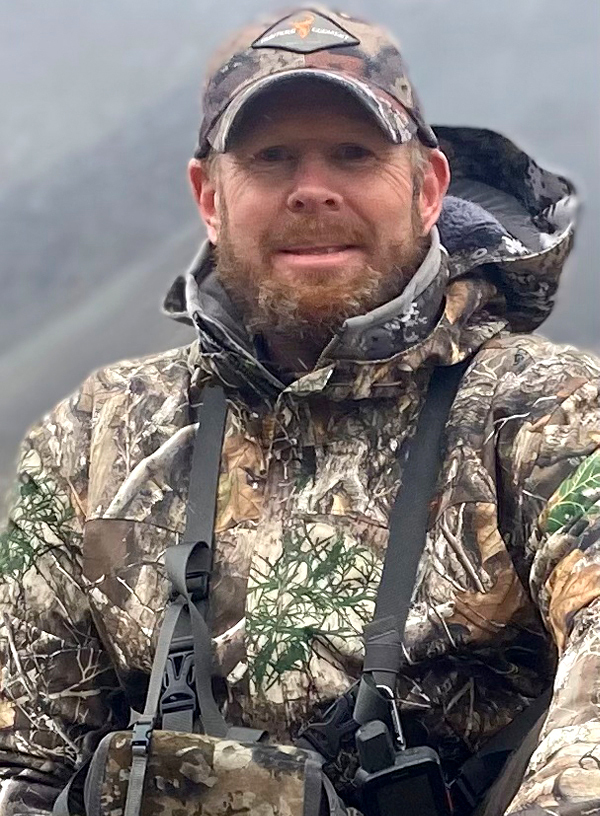
Experienced hunter Matt Ellis. Photo: Supplied
Ellis says he first became interested in Fiordland moose in the mid-2000s when he heard the very distinctive call of a female moose twice in the park.
“I know absolutely without a doubt that that was a moose. I know the female moose call. I know what I know,” Ellis assures.
He introduced himself to Tustin and, along with experienced Fiordland helicopter pilot Sir Richard Hayes, whose Southern Lakes Helicopters has been sponsoring Tustin’s research for 25 years, they’ve been working on the moose quest.
Moose were introduced to the park from Canada in 1910 – four males and six females released at Supper Cove, Dusky Sound. The first one was shot in Fiordland’s Seaforth Valley in 1929, the second bull moose shot in 1934.
This month’s (March) sighting has sent a flurry of excitement providing the strongest anecdotal evidence in recent history that a remnant population still survives in Fiordland.
“If animals have been living on for 115 years, why would they become extinct now?” Ellis asks. “It’s an incredible animal with an amazing tale.
This is not just a Fantasyland thing,” he says.
“I’m trying desperately to get conclusive evidence for my young son so that the next generation will know.”
The Tustin trio have three central areas of the park being closely monitored and under surveillance in a bid to gain photographic evidence.
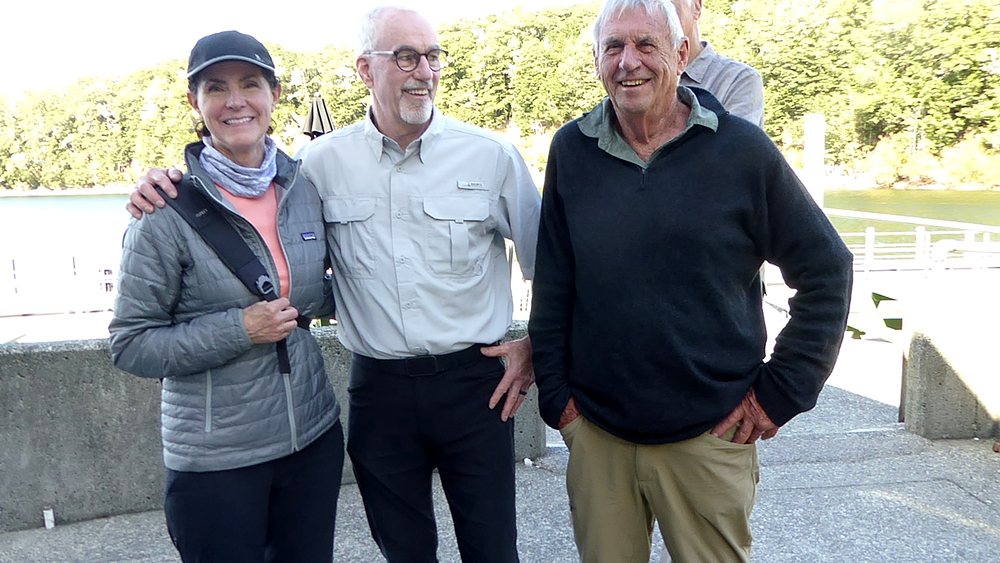
Fiordland 'Moose Man' and researcher Ken Tustin (right) meets up with Virginia and Norbert Nigon, after Norbert's moose sighting off the Kepler Track on 13th March. Photo: Supplied
They’re all “very excited” about Nigon’s sighting and trying to get some “rock solid evidence”.
“This is the most bizarre project,” Ellis says. “I’ve done a lot of surveillance and if you miss something it can be incredibly difficult.”
Hayes says this latest sighting has great credibility and Tustin has done amazing work. Southern Lakes and the Hayes family have sponsored Tustin’s work helping with helicopter time and camera installations. “Watch this space,” he says.
Tustin is renowned as Fiordland’s leading moose authority, a former biologist who’s spent decades researching their local existence and trying to gain photographic proof that moose still roam the park.
An elated Tustin says he spent 90 minutes interviewing Nigon about his recent sighting and says it’s one of the most compelling sightings locally in years. “100% bang on!”
Equally significant was the 2020 sighting by Southern Lakes Helicopters’ pilot Ben Young of a cow moose standing in a small clearing in the park, while he was a rear seat helicopter passenger.
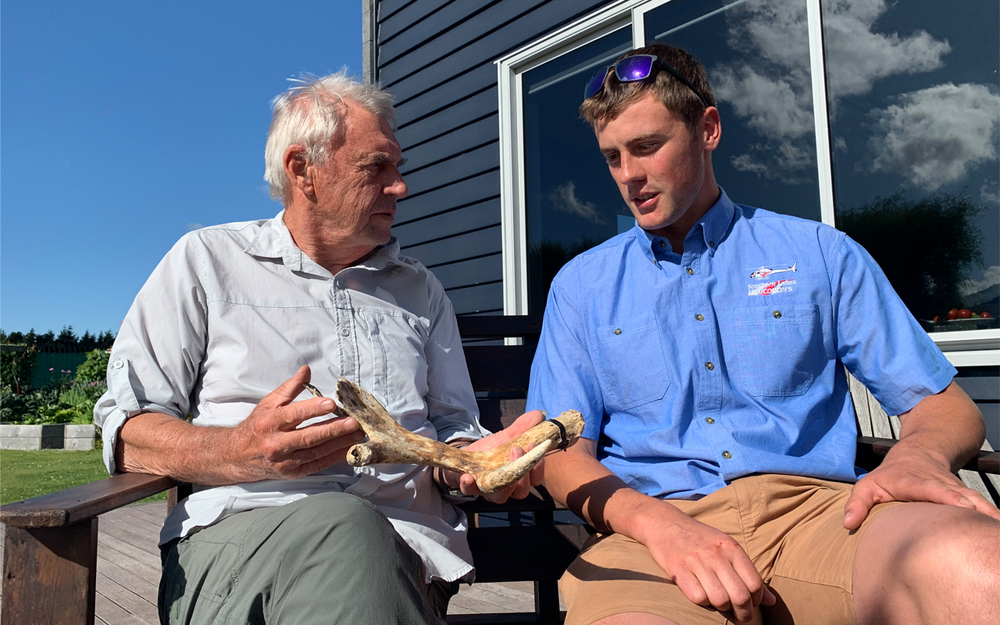
Ken Tustin talks with helicopter pilot Ben Young in March 2020, after Young spotted a moose in Fiordland National Park. Photo: Kirsty Macnicol/Southland App
Back then Young, who’s very familiar with moose, told Advocate South (now The Southland App) the moose shook its head, and he “recognised its big ears”. Young had previously worked as a hunting guide in northern British Columbia, Canada.
“Significant for moose identification is the distinctive rump patch, totally different to deer,” Tustin, who’s now writing his third moose book, says.
”The animal Norbert disturbed revealed its rear end as it vacated. The rump patch, as nature intended, is extraordinarily conspicuous."
He says some sceptics reckon Nigon saw a red deer or wapiti but that would have flashed a hugely conspicuous rump.
“He saw a big, dark brown rump, no rump patch. So now we’ve got someone seeing the front end and back end – both ends makes one very great moose,” Tustin says, delightedly.
However, there’s no convincing Te Anau DOC boss John Lucas: “I have no doubt that Mr Nigon believes he saw a moose. Unfortunately, without photographic proof we may never know,” Lucas says.
“Based on current knowledge, the location where the moose sighting occurred, and without any actual evidence to prove otherwise, the Department still holds the view that what Mr Nigon observed was likely to be a red deer, or possibly a red/wapiti cross.”
Moose were believed to be extinct in Fiordland and the location at Balloon Loop on the Kepler was “a significant distance from where moose were originally released”.
Tustin says it was “very disappointing” that DOC staff had been so “dismissive” about Nigon’s sighting, but the “powerful story” he’s telling “becomes more powerful the more that people scoff at it”.

Biologist, Moose researcher and author, Ken Tustin, presents the evidence before a gathering in Te Anau. Photo: Supplied
He and his team spent two and a half hours at the 13 March site searching for some forensic DNA.
The Kepler sighting is far away from where they and others have found small clues like hair caught in foliage and high teeth and mouth marks in the bark of trees, plus possible poo.
“There would be no food for them by the Kepler so we’re guessing this one was likely in transit. It may well be seen again,” he says.
“Distances aren’t great in animal terms, and they are incredible swimmers.”
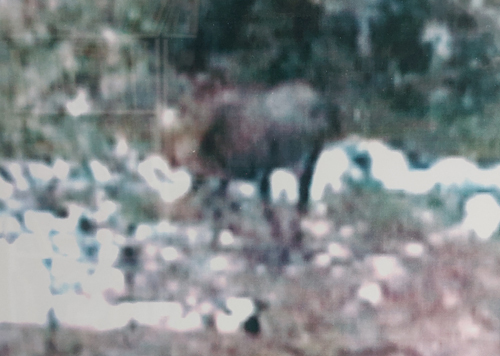
A remote camera photo taken in Fiordland National Park in July 1995. Two positive DNA moose samples were subsequently identified. Photo: Supplied/Ken Tustin
What is the difference between a cow moose and female deer (hinds) in Fiordland National Park?
A cow moose is 0.3 metre taller and at 450kg, up to three times heavier than a red deer hind and twice as heavy as a wapiti hind. A cow moose has a dark brown to black coat, long legs, a humped back, a large elongated muzzle and a distinctive dewlap (bell) hanging from their neck, while a red deer hind is much more slender looking with a reddish-brown coat. A wapiti hind's coat is a light brown with a distinctive white rump patch.